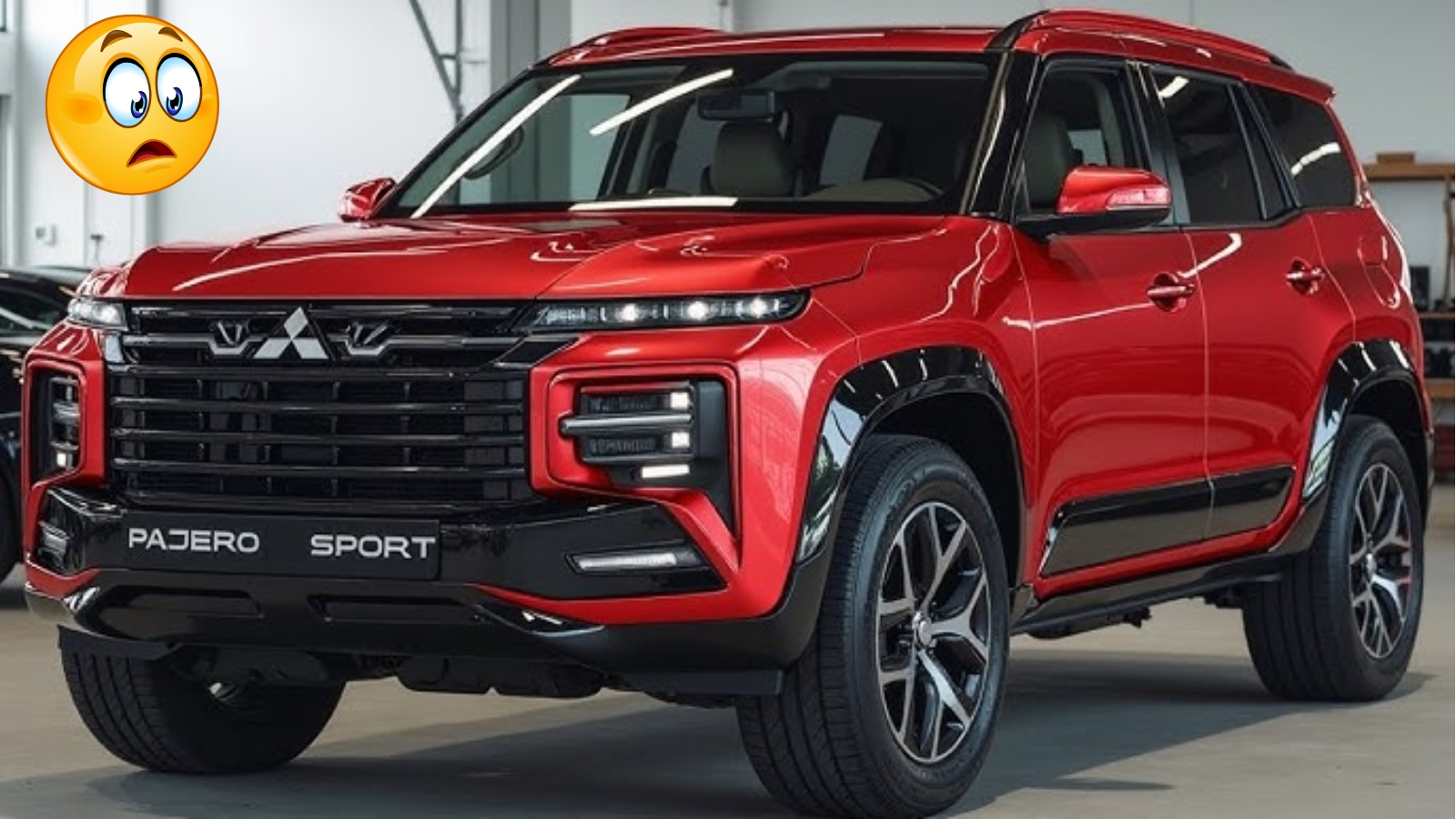The automotive world is buzzing with speculation about Mitsubishi’s next big move. With the design now more like a classic off-roader than a ute-based family wagon, a rumour is circulating the new model could adopt the Pajero name without the Sport suffix. This potential change represents more than just a naming decision—it signals Mitsubishi’s commitment to returning to its off-road heritage.
The Story Behind the Potential Name Change
For years, the Pajero Sport has served as Mitsubishi’s mid-size SUV offering, built on the same platform as the Triton pickup truck. However, the upcoming 2026 model appears to be taking a different direction. The replacement for the Mitsubishi Pajero Sport has been spied again, this time with a production-ready body and underpinnings likely borrowed from the latest Triton.
The rumors about dropping the “Sport” designation aren’t just based on speculation. Recent spy photos show a dramatically different vehicle that looks more like a traditional off-roader than the current family-friendly SUV. This shift in design philosophy might be driving the potential name change.

What’s Driving This Decision?
Several factors seem to be influencing Mitsubishi’s thinking. The current Pajero Sport is nearing its 10th birthday, and Mitsubishi Australia is relying on existing stock as the car can no longer be imported due to new autonomous emergency braking (AEB) regulations it doesn’t comply with. This regulatory challenge has forced the company to rethink its approach entirely.
The new model’s design represents a significant departure from recent trends. Up front the Pajero Sport replacement has a bluff fascia with a tall, wide grille flanked by a ladder of LED driving lights. This rugged appearance aligns more closely with the original Pajero’s philosophy than the current Sport model.
Design Philosophy: Back to Basics
Traditional Off-Road Aesthetics
The potential 2026 Pajero (without the Sport badge) showcases a return to classic SUV proportions. Around the side the new SUV has squared-off wheel arches, a clamshell bonnet, and a blocky silhouette. This design language speaks to serious off-road capability rather than urban sophistication.
Body-on-Frame Construction Returns
One of the most significant aspects of this potential change is the construction method. If the Pajero name is used on the car pictured here, it will see the model return to its body-on-frame roots, which it abandoned when the third-generation car debuted in 1999. This represents a complete philosophical shift toward serious off-road capability.
Market Positioning and Competition
Challenging the Toyota Land Cruiser
The 2026 Mitsubishi Montero has a chance to steal the Toyota Land Cruiser’s show, but only if done right. By potentially dropping the Sport designation, Mitsubishi appears to be positioning its SUV as a direct competitor to more serious off-road vehicles rather than family-friendly crossovers.
Global Market Considerations
The name change, if it happens, would likely apply across multiple markets. The Pajero has always been Mitsubishi’s flagship SUV model. Returning to this heritage name could help the brand reconnect with its off-road legacy and attract customers who value capability over convenience features.
Technical Specifications and Expectations
| Feature | Expected Details |
|---|---|
| Platform | Body-on-frame, shared with Triton pickup |
| Engine Options | 2.4-liter turbodiesel, potential hybrid variants |
| Launch Timeline | Late 2025 or early 2026 |
| Design Philosophy | Classic off-roader styling, boxy proportions |
| 4WD System | Super-Select 4WD-II with off-road modes |
| Target Market | Serious off-road enthusiasts, family adventure seekers |
What This Means for Consumers
Enhanced Off-Road Capability
The potential name change signals a focus on genuine off-road performance. The body-on-frame construction provides superior durability for serious trail work, while the more upright design improves approach and departure angles for challenging terrain.
Heritage and Brand Identity
For long-time Mitsubishi enthusiasts, dropping the Sport designation represents a return to the brand’s roots. The original Pajero built a reputation for reliability and capability in harsh conditions, qualities that the new model appears designed to recapture.
Uncertainty and Possibilities
While the rumors are compelling, Whether this turns out to be true remains to be seen, as an earlier rumour indicated Mitsubishi was going to revive the Pajero name for a more luxurious model based on the plug-in hybrid Outlander. This uncertainty reflects the complex decisions automakers face when balancing heritage with modern market demands.
The potential name change represents more than marketing—it’s about positioning and purpose. If Mitsubishi does drop the Sport designation, it would signal a clear commitment to building vehicles for people who need real capability rather than just the appearance of ruggedness.
Whether the 2026 model ultimately carries the Pajero or Pajero Sport name, one thing is clear: Mitsubishi is working to create something that honors its off-road heritage while meeting modern expectations for safety, efficiency, and technology.
Frequently Asked Questions
Will the 2026 Pajero be available in the United States?
While the vehicle isn’t expected to reach the U.S., Mitsubishi may offer new body-on-frame vehicles here in the future.
When will the new Pajero be officially announced?
Reports also mention that the upcoming Pajero Sport could make its global debut sometime by the end of 2025 or early 2026.
What engine will power the new Pajero?
Reports do mention that the SUV will have four-wheel-drive and be powered by the same 2.4-litre 4-cylinder twin-turbo diesel engine as on the Triton.
